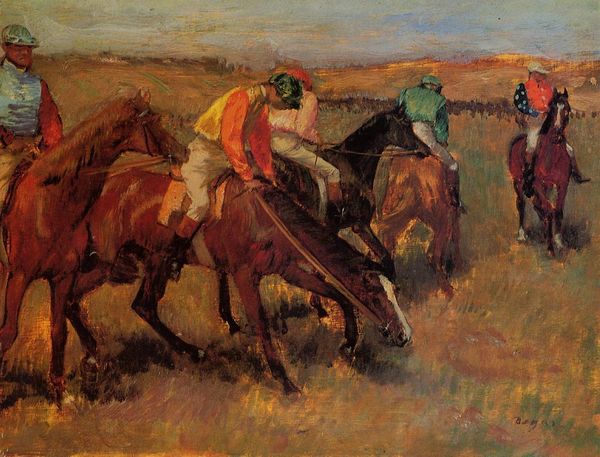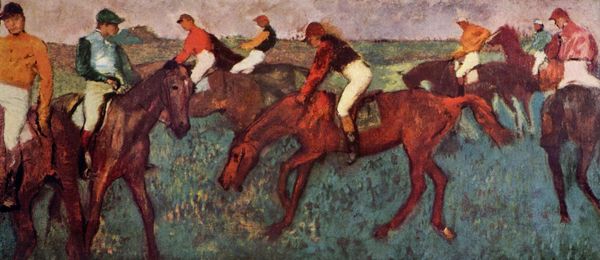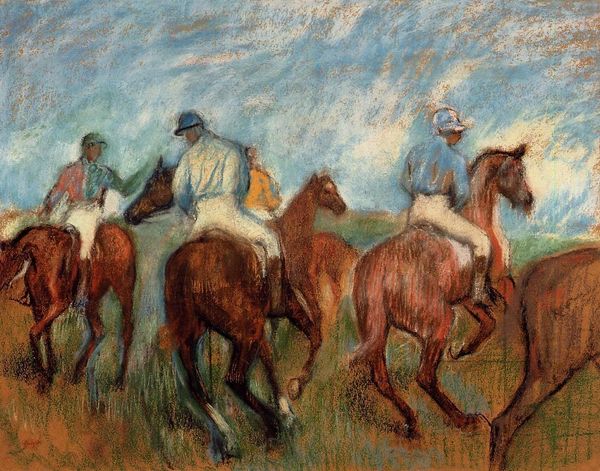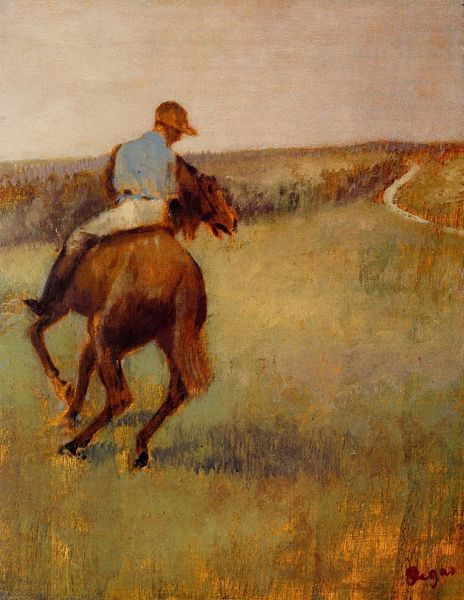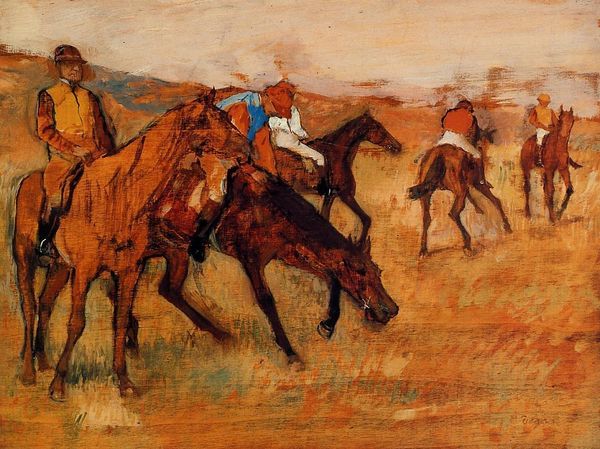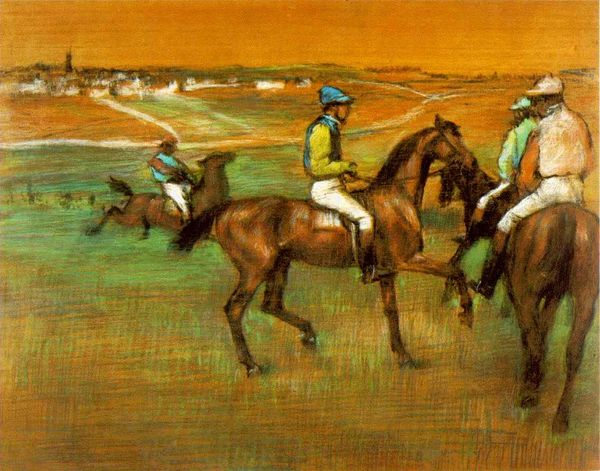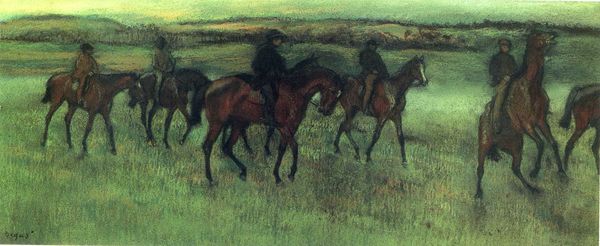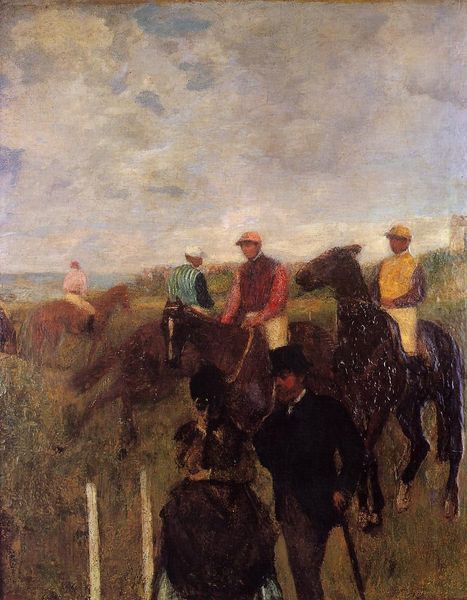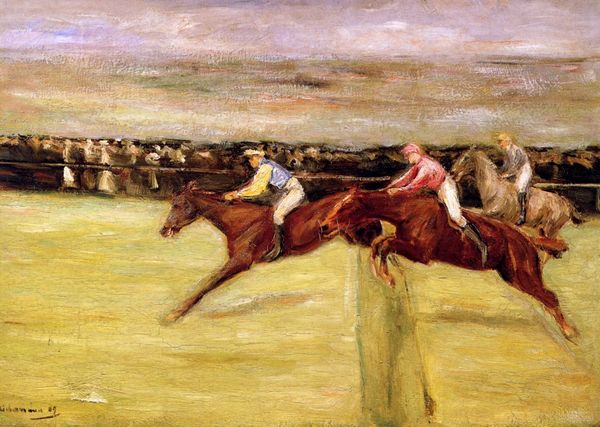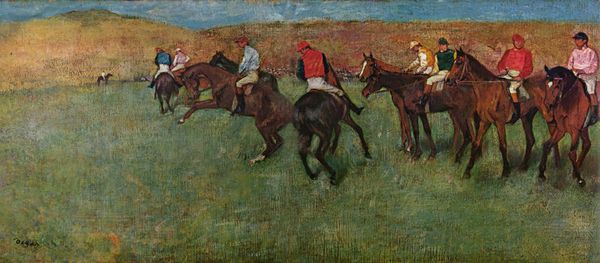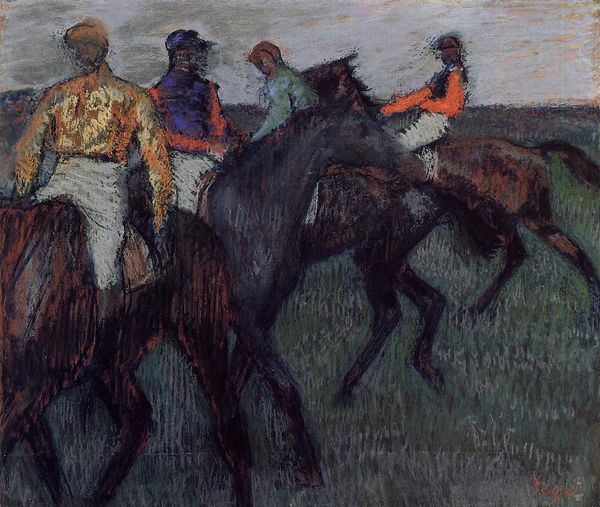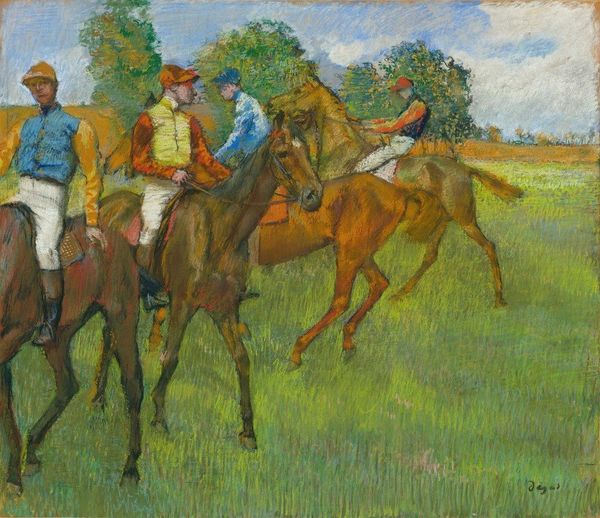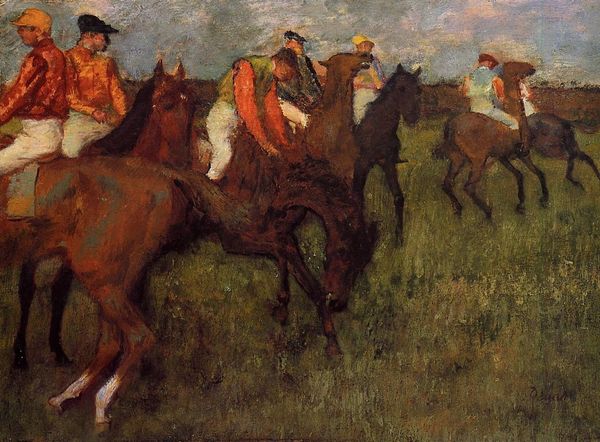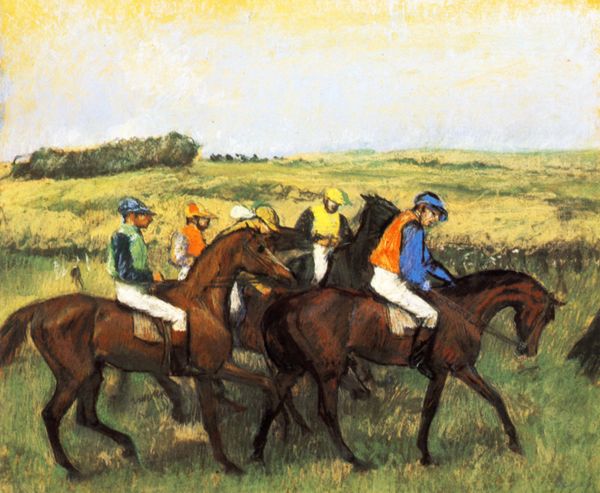
Copyright: Public domain
Edgar Degas created "Three Jockeys" using pastel on paper, and what immediately captures the eye is the dynamic composition and textural richness. The scene depicts a group of jockeys on horseback, rendered with loose, expressive strokes. Degas's choice of pastel allows for a vibrant yet soft palette. He uses color to define form and movement, focusing on the interplay between light and shadow. The horses and riders are not portrayed with photographic realism, but rather with a sense of immediacy and energy. Degas was deeply interested in capturing fleeting moments. "Three Jockeys" reflects this pursuit through its emphasis on movement and the ephemeral nature of the scene. This approach challenges traditional academic painting, which prized idealized forms and static compositions. Instead, Degas embraces a more modern, fragmented view of reality, inviting us to reconsider our own perceptions. Notice the foreground, how it functions not just aesthetically but as part of a larger cultural discourse.
Comments
No comments
Be the first to comment and join the conversation on the ultimate creative platform.
